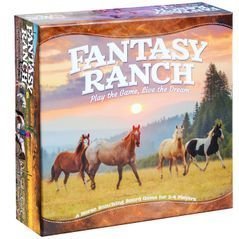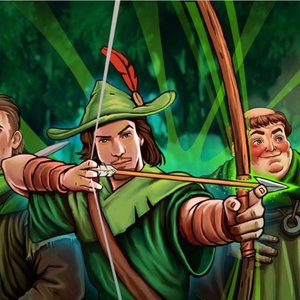
iTeleport Remote Desktop
Business and Utilities
App
"...unbelievably wicked!"-- David Pogue, New York Times "...a winning application."-- The Washington...

Recorder App Pro - Audio Recording and Cloud Share
Business and Productivity
App
***Over a million users choose Recorder App! Thank you for your support!*** Let's talk beyond...

partypoker - Play Real Money Poker & Casino Games
Games
App
Play poker whenever and wherever you want with the partypoker app. Get a seat at the best tables in...

Recorder App Lite: Audio Recording and Cloud Share
Business and Productivity
App
Let's talk beyond recording, let's talk sound! Recording App Pro is an all-in-one recording...

Loopy 2id for Telegram. Smart Team Messenger
Social Networking and Productivity
App
With +1M downloads Loopy is the most downloaded Telegram client on iPhone after Telegram. Loopy's...

Fussball im TV live
Sports and Magazines & Newspapers
App
So verpasst Du als Fußballfan kein Fußballspiel mehr! Hast Du Dich schon mal geärgert weil im...
Purple Phoenix Games (2266 KP) rated MechaTop in Tabletop Games
Jul 2, 2020
Disclaimer: We were provided with a PnP version of this game for the purposes of this preview. Please excuse my lack of a color printer, and rest assured that the cards are colorful and eye-catching. The rulebook we have is not the finalized version, but rather an up-to-date draft detailing the overall rules and gameplay. Some changes will probably take place during the Kickstarter campaign, so the finalized game system might have some differences to this preview. For more details, check out the publisher’s website! -L
MechaTop is a tabletop wargame system in which players pilot large Mecha suits and battle their opponents. To begin a game, you must first decide which game mode you want to play. After selecting the game mode, players create their Mecha teams for battle. Each game mode has an associated cost score limit – the highest maximum cost you can spend on your team. For example, a Mecha suit might cost 300, and the cost score limit for the chosen mode is 600, leaving you with 300 to spend on upgrade cards for your suit. Once all players have chosen and upgraded their Mecha suits, those corresponding cards are placing in their play area. Everyone then selects a Pilot card to be assigned to their Mecha suit, and receives a set of Button tokens and a secret Twist card (kept secret until played at any time during the game). Decide which weapons to equip on your suit for the start of the game, roll a d6, and take turns placing your Mecha in the playing field in ascending numerical order of the die rolls. You are officially ready to start the game now!
Each round begins with the Instinct Phase, where players decide which 2 Button tokens they want to play this round. The Button actions are: Attack, Movement/Rotation, Change Weapon/Reload, and possibly Telekinesis. After the Buttons have been selected, they are placed face-down on the playing field next to their corresponding Mecha suit. Next is the Initiative Phase, in which all players roll a d6 and the player who rolled the highest gets to act first in the round. On your turn, you may choose to activate 1 Button token, activate both Button tokens, or declare No Action and pass your turn. Choosing to activate only 1 Button allows you to perform a simple action, but activating both at the same time in certain combinations allows you to perform a more powerful type of the corresponding action. Choosing to do No Action allows you to keep both Button tokens facedown. The benefit to leaving either 1 or both Button tokens facedown is that you can then use them as reactions during an opponent’s turn. Let’s say an opponent tries to Attack you – if you have your Movement Button still at your disposal, you can use it to attempt to dodge the hit and negate that damage. If you don’t use a Button in that situation, or don’t have one left face-down, all the damage goes straight through on your suit, thus bringing you closer to losing the game. Be warned – some actions are automatic, but some are resolved by dice rolls, so you better hope luck is on your side! After all players have had a turn in Initiative Order, a new round begins with another Instinct Phase. Play continues in this manner until the win condition of the selected game mode has been met, and the winner is deemed victorious!
First and foremost, I think one of the coolest things about the MechaTop system is that it can be played using ANY mecha models, action figures, or standees that you choose. In my childhood, Transformers made up a decent amount of our household, so it’s neat that I am able to bring those back out again after all these years. The nostalgia is great in that sense, and it makes the game more enjoyable. Also along those lines, the game will come with blank Mecha and Pilot cards for you to create your own – the rulebook has a section dedicated to stat card creation. It’s a neat element that lets you add a personal twist to your game, and lets you sit in the pilot’s seat (see what I did there?) to make the game truly your own! In the team creation step, players also have the opportunity to buy Upgrades for their suits, and that gives you additional control over your game. You can create so many different combinations of Upgrades that keep each game unique and entertaining.
The overall game flow is pretty nice. The rounds are logical, and the Button tokens add a unique element of strategy that takes this game to the next level for me. Do you forego doing a special action this turn and save a Button token in case an opponent tries to attack you? Or are you willing to risk damage to your Mecha suit in order to execute the exact plan that you want? The Button tokens take MechaTop beyond a simple attack-and-defend wargame and incorporates strategy to help balance out the randomness of Initiative rolls. The Twist cards are a nice touch as well, because if played at the right time, they could literally turn the battle around for you! No matter how good your strategy is, however, all offensive/defensive actions are dictated by dice rolls. So there’s a bit of a luck element embedded in this game as well. You have to be able to adapt your strategy on the fly depending on how your die results are turning out!
There is a bit of a learning curve to this game that can make it seem daunting at first. Different actions require a different number of dice to roll, and knowing what results counts as a success or failure is not always easy to remember. Incorporating a Player Reference Sheet would eliminate some of the confusion, but it does get easier to remember the more you play the game. Probably the biggest drawback of the system for me is that there is no set game board or movement system. The rulebook details movement speeds and weapon ranges based on different scales of models you might use, but that honestly just went right over my head. Providing a set of bases for models, as well as a hex-grid board would take out that guess-work for players and make it easier to visualize movement and range. And that would help keep the game flowing smoothly because players would not have to spend time measuring distances across the play area.
Let’s talk components. As I mentioned earlier, we only have a PnP copy of MechaTop, so admittedly our components are not the best. That being said, the finalized game should be coming with nice colorful cards, sturdy cardboard tokens, and good quality dice. Don’t let my drab version keep you from checking out the game on BGG or its own website!
All in all, MechaTop is a wargame system that I can see myself playing again. The gameplay itself is straight-forward and simple to grasp, but the strategic elements incorporated with Button tokens, Twist cards, and Upgrades ensure that you will never play the same game twice. If you’re looking to get into wargame systems, or are just looking for a unique wargame setting, definitely check out the MechaTop Kickstarter when it goes live later this month!
Daniel Boyd (1066 KP) rated Until Dawn in Video Games
Jul 21, 2017
That’s not to say that everything that this game has to offer is positive, several of the big twists can be seen coming from a mile away, for example my better half guessed who the killer was going to be within the first hour of our playthrough, but other than that I am struggling to find any real criticisms in this game. It is just a fun experience that I would recommend to anyone, whether you are a horror fan or not.
Okay, spoiler time.
The twists in the game are fairly obvious. From very early on in the game it is clear that the ‘therapy’ sessions with Peter Stromare are a hallucination, probably a hallucination of the psycho in the clown mask and that psycho is probably Josh. All of these things come to pass, which means when they are revealed to be true the shock value is pretty much lost. It is also fairly obvious that there is something after the group besides the psycho, something that is more than likely to be supernatural. The only twist is finding out what that is and when it’s revealed to be the Gollum-like Wendigos, I was somewhat disappointed. The creatures are pretty cool in how they move, as they very twitchy and quick, but they are fairly generic and not all that scary once you know what they look like. The character deaths are quite well done, but half of the characters have fake ‘deaths,’ before their actual death scenes which makes the actual death scenes less impactful and somewhat fall flat.
Overall, Until Dawn is an engaging, entertaining experience that doesn’t really have any major flaws. For the most part the humour and the scares are well executed and while not all of the characters are likeable, they are all well written horror stereotypes that are played very well by their real life counterparts. This game was unexpectedly great by a number of people, and is seen as a surprise hit and likewise for me, it exceeded my expectations and served as a very pleasant and welcome addition to the modern horror genre.
Purple Phoenix Games (2266 KP) rated Fantasy Ranch in Tabletop Games
Jun 12, 2019 (Updated Jun 12, 2019)
DISCLAIMER: The game comes with three modes of difficulty AND an included children’s game that also can be played on three modes of difficulty. For this review we are concentrating only on adult mode two. We felt mode one was too introductory, but we did not want to go all in right away on mode three. -T
As with most board games, you are trying to amass trophies (VP) and the winner at the end of five rounds is the rancher with the most trophies. On your turn you can take one Limited (standard) Action and as many Free Actions as you would like. Limited Actions include: buy a horse, buy a location on your ranch board, or farm your ranch for goods. Free Actions include: sell a horse, move horses to/from your home area to/from a different area on your ranch board, or trade goods at a 2:1 ratio. Once every player has taken their turn, you enter a show using the horses you have collected.
Buying a horse requires different amounts of food (in carrots) that you gain from different actions (farming your ranch, selling a horse). Luckily, spending food is a one-time action and you don’t have to feed your horses every turn. A great improvement over other “feed your villagers” games, in my opinion – yeah, I said it. Buying a location on your ranch board/playmat requires “tack,” which is symbolized by boot tokens (as seen below). You can always get more food and tack by farming your ranch, and you receive six goods of any combination, but that’s a Limited Action and prevents you from doing the other actions.
Selling a horse is easy, yet the separation anxiety is real, as you simply discard the horse for the amount of food it costs to purchase. Moving horses is easy too – your Home area of your ranch/playmat can only hold so many horses, so you will need to move horses of certain types to unlocked (purchased) matching areas on your ranch. This is important, as you cannot keep buying red horses or you will certainly run out of room for them, even if you unlock the red area on your ranch board. Plus unlocking sections of your ranch provides you with trophies at game end. The last free action is trading goods, which you do at a 2:1 ratio. So trade in two food for a tack or vice versa.
At shows you use horses for their specific specialty skills plus a die roll. Each horse has specialty in one area, and some skill in other areas. The number associated with a skill icon indicates the starting skill “strength” that you will add to your die roll. You roll all three dice of your color, take the highest result from the roll, and add the skill strength of the horse skill. That’s your score for the show. The highest number is awarded 1st place and the rewards printed, and so on and so forth for the other placing horses. This could result in more food or tack, or even your choice of horses for free from the sales barn.
On the very last turn of the game you will compete in three shows (instead of the normal two shows at the end of each turn) and can only use World Class horses, or buy your way into the show with food. The show process is the same, but it is the final push to earn as many trophies as possible before game end. And that’s it!
Components: This game is FULL of components. It’s a pretty stocked and heavy box, but still only the size of a Ticket to Ride box. The playmats, game boards, and cardboard chits are all of really great quality. The cards are great quality as well with photos of real existing horses (as well as the photos of real existing ranches on the giant ranch cards that are essentially beautiful player reference cards and resource holders). The best components of the game are the super cute little horeeples (oh no, that can’t possibly be correct). Horse-meeples. They come in different colors to match the areas on your ranch that you need to unlock and move them into so you don’t overcrowd your Home area. Even though my copy came with a green horse who lost his front legs, we know that he competes hard and lives his best life. The art is really really great and, though busy on the board at times, the game looks really good on the table. No qualms with the components on this one at all.
Here’s what I really like about this one. It’s a euro through and through, but it’s a euro that is actually exciting, with a unique theme, and one that I genuinely cannot wait to play again. I want to try mode three as soon as I can, and I really want to introduce my son to the game as soon as he is able to handle it. I am finding it really really hard to think of a game that comes ready to play three ways for adults, has components included to play the game three ways with children, and is actually super fun. I can’t think of any. This game is truly in a class by itself.
I love that no matter how tactical you play or how strategic you want to make it, sometimes the dice love/hate you and it could make all the difference. As you can see in the scores, we all love it (with the exception of my cousin Tony who rated it a three because of the dice – WHICH is odd because it is his father that was the harness racing jockey of the family). This review would have been live a week ago, but immediately after playing last weekend Josh said he would like to bring it home to play with his family. His wife is from Kentucky, and they kinda like horses and horse racing there. Well, his wife and son also rated this game out of 6. His wife gave Fantasy Ranch a 15 and his son rated it a 16. As that completely throws off my rating scale I did not add them, but as you can see we at Purple Phoenix Games give this one a very boot-kickin’ 19 / 24. If only we hadn’t invited Tony over to destroy the scores… We highly recommend you check this winner out. Seriously, it’s great.
https://purplephoenixgames.wordpress.com/2019/06/04/fantasy-ranch-review/
Purple Phoenix Games (2266 KP) rated Robin Hood: Hero of the People in Tabletop Games
Jun 13, 2019
Disclaimer: This review is for a Kickstarter preview. We are not being paid for this preview, but we were sent the game from the designer. Components and rules may be changed before the product and project is finished. -T
As this game is not yet in full production, I will paraphrase the rulebook here for you so you can get an idea of how the game plays. Then I will give my opinions on this little card game.
Robin Hood: Hero of the People is a one-player card game that is played over three phases. To win the game you must have all Merry Men and Maid Marian recruited and active, while the bounty on your head is less than 500. You lose by seeing the bounty at or above 1,000 or by playing through the entire deck of Story Cards without winning. You may set the difficulty level by choosing how much you would like the bounty to start at before you begin play (100, 200, or 300). The rulebook instructs you how to setup the game using several piles of cards to create the play area. Deal yourself three Loot (skill) cards and the game is on!
The first phase of the game is Robbing from the Rich. During this phase you draw three (or more depending on other cards currently in play) Loot cards from the big deck. These cards consist of different skills to use later – like Archery, Strength, Swords, etc. You will also find Gold and Influence cards. These Loot cards are needed to recruit Maid Marian and all the Merry Men, as well as used for negating powerful negative Story Card effects in the third phase of the game. Once you have drawn your Loot cards, you may play up to three of them into your Inventory in front of you (unless a card instructs you otherwise). Only your cards in the Inventory will be used to recruit and rescue Merry Men, or be affected by Story Cards.
You have placed your skills and bargaining cards in the Inventory. It is now time to use them to recruit your Merry Men! The second phase is the Actions phase. You have several options of actions to take on your turn, but you may only take one action. One option is to recruit Merry Men characters. Each character card begins the game face-down in a grid. The card backs show the recruitment costs (paid in skills) for each. They all have different skill cost combinations on each back so you must choose your Inventory cards carefully in the first phase. During the game some characters may become jailed through the Story Cards. Also on the backs of the character cards are the costs to rescue your friends from jail, and the costs are different than the recruitment costs. This throws a wrench into your plans as you are trying to recruit and protect all your Merry Men, just to have them thrown in jail and made unavailable to you. Curse you, Sheriff of Nottingham!
Also during this phase, in addition to recruiting and rescuing your allies, you may purchase King Richard cards, Sherwood Forest cards, or decrease your bounty. King Richard cards are very very costly (requiring up to nine skills to purchase!) but also very powerful and very helpful to your cause. There are three of these in the game and when you have used one you must discard it out of the game. Do you have an abundance of skills and Loot cards to use? Would you like to protect your Merry Men from becoming jailed? Well during this phase you may also purchase Sherwood Forest cards to begin building a hideout. It costs two Strength skills, but once you have acquired all six Sherwood Forest cards, most of the Merry Men are protected from being jailed. Huzzah! The final option you have in this phase is spending any three Loot cards from your Inventory to reduce your bounty by 100.
The third and final phase is the Story Card phase. During setup you are instructed to separate this deck into two piles, shuffle them independently, and place the Story Cards in set one on top of the story cards in set two. Set one cards are annoyances that can bleed you of skill cards or raise the bounty on your head. Annoying! The cards in set two are far worse, as they will jail your unprotected Merry Men and set you back further from victory… also whilst raising your bounty. Super annoying!! Curse you again, Sheriff!!
If no win or lose conditions have been met at this time, you will return to the first phase with this additional rule: switch your active character (you start the game with Robin Hood) with another character you have recruited in the grid. Each character has a different special ability to be used on your next turn as well as a different set of skills printed on the face that you may use as discounts for recruitment, rescues, and purchasing of King Richard and Sherwood Forest cards. Example: Much the Miller shows 1x Sword and 1x Strength. You can use his skills as a discount to purchase a Sherwood Forest card by spending just one Strength card from your Inventory. Time to stick it to the Sheriff!
So how does it all shake down? Overall I say the game is really good. It is unfinished, and has not yet made it to Kickstarter, and I suspect that has something to do with any drawbacks I have experienced. Upon reading the provided rulebook and attempting Game 1, I had several rules questions. Rodney was quick to provide answers and it made the game so much more playable and enjoyable. Since it is a solo game only, every decision you make directly impacts how the game is played (duh, right?). There’s nobody else to mess with your plans, nor help them succeed. There’s no AI or ghost player. Just you versus the game. I have played this many times now on different difficulty levels and have won and lost on each. It would seem balanced, however…
There are a few strategies I attempted to use on my different plays to see how they might add to the complexity and change the results. I noticed that I won more when I completely ignored Sherwood Forest and King Richard’s cards. Yes, one of the King Richard cards reduces the bounty by quite a bit, and that’s just in one turn, but the cost is so mighty that I rarely found them enticing enough to pull the trigger. Same goes for Sherwood Forest. Though the cards cost a paltry two Strength, I found that I needed those Strength cards to recruit or rescue my Men and could not justify spending two per card (and six total cards to build the hideout) for that protection. Your play style may vary, and I am itching to play again to try new things out. Maybe I’m wrong about Sherwood Forest. I think that’s a really great trait for a game – to have its players thinking about different strategies while not playing, and just waiting for when they can play again.
I have to say, I am very excited to see this go to Kickstarter, and to learn what Rodney has in mind for improvements to the components, or rule tweaks, and the almighty stretch goals. I might be backing this one, even though I have a great working version of it now…



